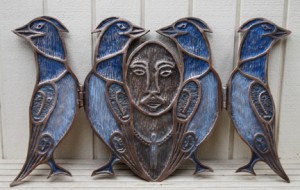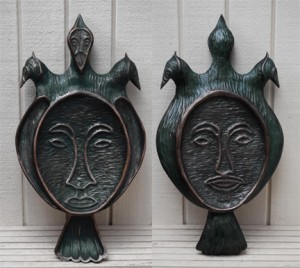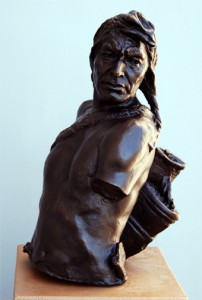“Blue Jay Man”
John Hoover is widely known for his Native American artwork. “Blue Jay Man Triptych” was inspired by boyhood memories of portable, Russian Orthodox icons that traveling priests brought to the artist’s Alaskan hometown. Drawing from his own personal mythology, John created his own version of the spiritual artifact. The “jay,” is in reference to his name and is one of the “inua” or animal spirit energies connected to the woodcarving. The artist’s own facial features and signature necklace complete the iconic self-portrait.
“Blue Jay Man Feast Dish,” also combines many layers of nature, spirituality and self-reflection. The feast dish is reminiscent of traditional, functional Aleutian artwork that John admired while discovering his own style of sculpture. Two Ravens Studio was honored to mold, cast and patina these cedar art forms for the artist and his family.


